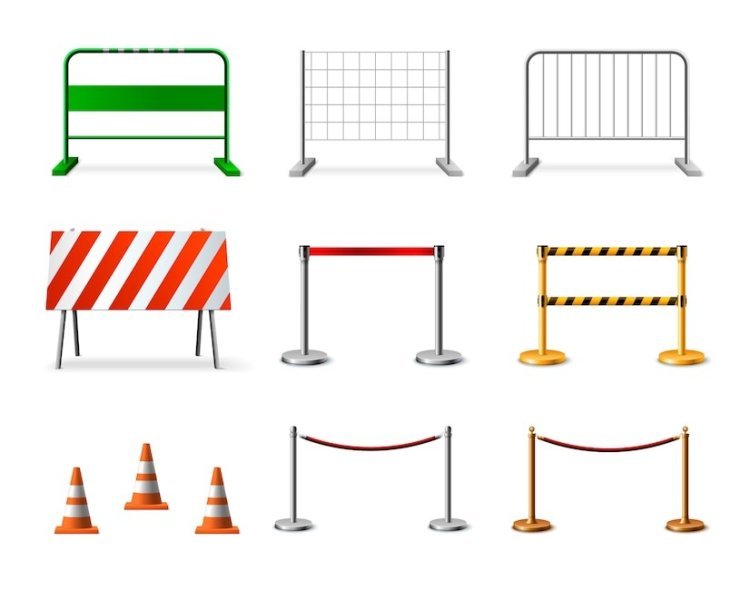Choosing the Right Safety Bollards: Factors to Consider
Explore how safety bollards enhance security and safeguard pedestrians and structures in various environments.

Safety bollards protect pedestrians, vehicles, and infrastructure from accidents and collisions. Whether used to control traffic flow, delineate pedestrian pathways, or safeguard storefronts, choosing safety bollards ensures adequate protection and durability.
This article explores the key factors to consider when selecting safety bollards, including material, visibility, and installation requirements, to help you make informed decisions for your safety needs.
1. Purpose of Installation
Before choosing safety bollards, determine their intended purpose, whether to prevent vehicle access, protect storefronts, or enhance pedestrian safety. Understanding your application's specific requirements will help you select bollards that effectively meet your needs.
2. Material and Durability
Safety bollards are available in various materials, including steel, concrete, and plastic. Consider the durability and strength of each material and the level of protection required for your application. Opt for heavy-duty materials like steel for high-traffic areas or environments prone to vehicle impacts for maximum durability and safety.
3. Visibility and Reflectivity
Visibility is crucial for safety bollards, especially in low-light conditions or areas with high vehicle traffic. Choose bollards with reflective strips or coatings to enhance visibility and alert drivers and pedestrians to their presence, reducing the risk of collisions and accidents.
4. Installation Requirements
Consider the installation requirements of safety bollards, including anchoring methods, depth of installation, and surface mounting options. Ensure that the chosen bollards are compatible with your site conditions and can be installed securely to withstand impacts and provide adequate protection.
5. Compliance with Regulations
Ensure the selected safety bollards comply with regulations and standards, such as ADA (Americans with Disabilities Act) requirements and local building codes. Compliance with these regulations ensures that your safety bollards meet minimum safety standards and legal requirements for installation.
6. Cost and Budget Considerations
Evaluate the cost of safety bollards about your budget constraints and long-term maintenance requirements. While higher-quality materials and features may incur higher initial costs, they can provide more excellent durability and cost savings over time by reducing the need for frequent replacements and repairs.
7. Energy Absorbing Bollards
Energy-absorbing bollards absorb and dissipate impact energy to minimise damage and injury in a collision. They are ideal for areas with high vehicle speeds or where pedestrian safety is a primary concern, offering enhanced protection and peace of mind.
8. Customisation Options
Explore bollard customisation options to tailor their appearance and functionality to your requirements. Some manufacturers offer customisable features such as colour variations, logo imprints, or additional attachments like signage or lighting. Customised bollards enhance aesthetic appeal and serve as branding opportunities or convey important messages to pedestrians and drivers, further enhancing their effectiveness in promoting safety and awareness.
9. Environmental Considerations
Take into account the environmental impact of the materials used in safety bollards. Opt for eco-friendly materials or those with minimal ecological footprint, such as recycled steel or sustainable plastics. Additionally, consider the longevity of the chosen materials and their potential for recycling or re-purposing at the end of their lifecycle.
Choosing environmentally conscious options aligns with sustainability goals and demonstrates a commitment to responsible stewardship of resources while ensuring the long-term durability and effectiveness of the bollards.
10. Maintenance and Accessibility Features
Evaluate the maintenance requirements and accessibility features of safety bollards to ensure ease of upkeep and compliance with accessibility standards. Look for bollards with features such as removable caps or bases for convenient maintenance access. These allow for easy inspection, cleaning, or repairs without requiring extensive excavation or specialised equipment.
Accessibility features such as rounded edges or tactile elements for visually impaired individuals enhance safety and usability for all pedestrians. Prioritising maintenance and accessibility facilitates ongoing upkeep and promotes inclusivity, contributing to the overall effectiveness and longevity of the safety bollards installation.
Conclusion
Choosing the proper safety bollards ensures adequate protection and safety in various environments. By considering the material, visibility, installation requirements, and compliance with regulations, you can select bollards that meet your specific safety needs and provide reliable protection for pedestrians, vehicles, and infrastructure. Investing in high-quality safety bollards enhances safety and offers long-term durability and peace of mind for property owners and facility managers.
What's Your Reaction?











![Wireless Connectivity Software Market Size, Share | Statistics [2032]](https://handyclassified.com/uploads/images/202404/image_100x75_661f3be896033.jpg)




